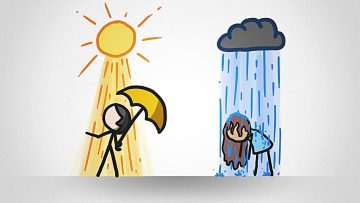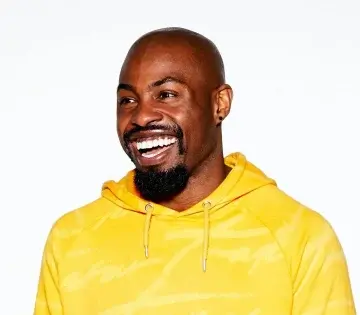

Jean Lecomte du Nouÿ, A Eunuch’s Dream, 1874. Courtesy of the Cleveland Museum of Art.
At the start of lockdown, I was an insomniac. Some nights I wasn’t able to sleep until dawn. Waking life was an episode of Black Mirror unfolding in real-time. Yet while the news was a morbid stream of statistics, being at home felt weirdly detached from reality. If you ventured out, you’d hear the supermarket tannoys echoing in unison down the empty aisles: ‘Stay home. Save lives. Stay home. Save lives.’
When I finally did sleep, my dreams were intense. I saw nurses sprint down flood-lit corridors to attend to the perpetual beeps of the ICU; people having their throats cut with kitchen knives; the Grim Reaper on a roundabout; and underground trains full of coughing people. As it turns out, I wasn’t the only one with a supercharged dreamlife.
Across the world, people have been reporting increased experiences of strange and unusually vivid dreams. When the U.S. shut down, two California-based sisters – Erin and Grace Gravely – began collecting covid dreams and archiving them online. Shortly after launching, they began receiving up to 100 submissions per day.

Max Ernst, The Elephant Celebes, 1921
In Illinois, someone dreams of an alien incursion. In Oregon, someone has a recurring dream of ‘apocalypse mushrooms’, which resemble orchids and only grow in cities devoid of humans. In El Salvador, a person dreams of a hospital being attacked by molotov cocktails. While the dreams vary in content, the majority of them share one thing in common: anxiety.
Throughout history, dreams have been an endless source of intrigue. Ancient civilisations looked to dreams as messages from the gods and created lengthy manuals to decipher them. In classical Greece, dreams were seen as a powerful curative force and ‘sleep temples’ were routinely used to seek cures and revelations from deities. Centuries later, when Sigmund Freud published his seminal book, The Interpretation of Dreams (1899), attitudes towards dream interpretation began to shift. Instead of having a divine origin, dreams were thought to unmask what lurked deep within the psyche.
Science since suggests that our dreams are intrinsically linked to our wellbeing while we’re awake. During rapid-eye-movement (REM) sleep, which is the restorative sleep phase and most associated with dreaming, areas of the brain are stimulated which are vital for both learning and memory.

EEG showing REM brainwaves during sleep
According to Deirdre Leigh Barrett – a leading researcher in dreams – there is a surge in dreams during crises. From a survey of more than 6,000 covid dreams, Barrett quickly noticed that many dreams were metaphoric. Respondents described plagues of insects, invisible monsters and shadowy figures dominating their dreamscapes, which she ascribes to the difficulty of visualising the covid-19 virus.

Georges de la Tour, Dream of St. Joseph, c. 1600
Speaking to The Harvard Gazette, Barrett says she’s seen every bug imaginable attacking the dreamer: “swarms of every kind of flying insect you’ve ever heard of; armies of cockroaches; masses of wriggling worms; grasshoppers with vampire fangs.”
ArrayThe fact that people are dreaming more – and more vividly – during the pandemic is not entirely unprecedented. Barrett has previously studied how traumatic events, like 9/11, altered people’s dreams in the days succeeding the event, and recorded the dreams of combat veterans and former prisoners of war, discovering that their dreams also increased in intensity. While staying at home can hardly be compared to the trauma of war, the effects of stress and isolation are undeniably having a profound impact on us all.
In 1933, the year Hitler seized power in Germany, Jewish journalist Charlotte Beradt had a series of nightmares. After waking up night after night drenched in her own sweat, she suddenly thought: what if I am not the only one? What if other people are dreaming these things too? These inquiries soon became the basis of a research project, in which she secretly collected the dreams of her fellow citizens in Berlin. Remarkably, between 1933-39, Beradt managed to gather dream accounts from more than three hundred people, and eventually published them in a now out-of-print book titled The Third Reich of Dreams: The Nightmares of a Nation (1966).

Henry Fuseli, The Nightmare, 1781
Extracting dreams in Nazi Germany was no easy undertaking. Many people were afraid to disclose their dreams and Beradt often had to copy them in code, conceal them in the bindings of books and post them as letters to people in countries abroad to evade detection from the Gestapo. Some claimed they could only dream in geometric shapes, as anything more specific could be incriminating. Some dreamt in a cryptic language. Others spoke of lamps and ovens conspiring against them and reporting them to the Nazis.
“These dreams—these diaries of the night—were conceived independently of their authors’ conscious will,” Beradt wrote. “They were, so to speak, dictated to them by dictatorship.”

Francisco Goya, The sleep of reason produces monsters (No. 43)
It was an influential book in many ways, one that revealed the psychological impact of the regime, but it also suggested how dreams have the ability to not only inform us about personal dynamics, but about changing collective realities and cultural dynamics too.
dreaming serves [as] simply giving hope for the future, simply giving visions of possibility beyond the limits, fear and uncertainty of the present
While the connections between the events in our dreams and our waking lives are still not fully understood, research shows that dreaming plays a pivotal role in the processing of experiences, emotions and memories. Dreams may filter out information we no longer need and even pose unexpected solutions to problems. They hold a mirror to the unconscious, awakening us to what is lost or hidden.

Henri Rousseau, The Sleeping Gypsy, 1897
Unsurprisingly, artists and writers have sought inspiration from dreams for centuries. In 1816 – known as the ‘Year Without Summer’ because of severe climate abnormalities – Mary Shelley was staying on the shores of Lake Geneva, with her husband Percy Bysshe and other prominent poets. But due to unforeseen weather, they were confined to their lodge with nothing to do – essentially in lockdown. It was there that one night she allegedly dreamt the entire story of Frankenstein, which she published two years later. Salvador Dalí (1904-1989), who famously harnessed his dreams for creativity, once said: “Give me two hours a day of activity, and I’ll take the other twenty-two in dreams.”

Antonio de Pereda, The Gentleman’s Dream, 1655
Like art, dreams can instil us with a sense of optimism. “One of the most valuable functions that dreaming serves during times of crisis, is simply giving hope for the future, simply giving visions of possibility beyond the limits, fear and uncertainty of the present,” says sleep scientist Professor Mark Blagrove in a podcast on quarantine dreams. “Dreaming has that capacity in a moment of darkness and despair to calm and remind people there is something you can work towards in the future.”
It’s true that not all the dreams recorded in the above projects have been disturbing or unpleasant. Some people have simply been dreaming of things they’ve missed during quarantine, or dreaming of a speculative future in a covid-free world.

Paul Nash, Landscape from a Dream 1936–8, Tate
One dreamer recounts a dream on idreamofcovid (the website set up by the Gravely sisters that enables people to share and read other people’s dreams) in which she envisions life after the pandemic: “Shelter-in-home was lifted. We were free. My parents, whom I hadn’t seen in months, made the long drive down to where I live, and we went to my favorite coffee shop. It was swamped with locals, coming out of their homes, excited to be alive and experiencing life … Everyone was so happy. We drank and danced and laughed all night long.”

Jim Shaw, Dream Drawing (I was seeing an old atomic bomb test…), 1995
While dreams remain as enigmatic as they always were, we can be reassured in the knowledge that dreams are good for us. Dreams represent the liminal space between inner and outer reality, constantly challenging how we perceive things. They can help us navigate uncertainty in times of crisis. They can heal us, and they have the power to expose important truths – the question is will we listen?




